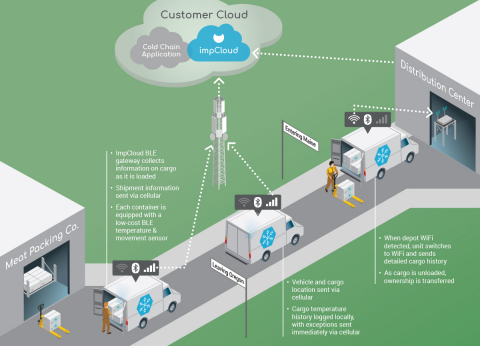Electric Imp Inc., vendor of edge-to-enterprise cloud IoT connectivity solutions, announced on Wednesday impCellular, bringing seamless and cost-effective cellular communication to its security-first IoT platform.
Unlike other cellular IoT solutions, impCellular leverages Electric Imp’s unique platform architecture to simplify the process of developing, shipping and maintaining cellular connected devices. With impCellular, customers are never exposed to SIMs, activation, complex price plans or burdensome carrier requirements; connectivity is as easy as applying power.
Building on Electric Imp’s heritage in WiFi and Ethernet connected devices, hybrid operation modes are also supported, allowing devices to opportunistically — and securely — use lower cost networks when available.
For example, telematics applications can send high volumes of buffered sensor data over WiFi when a truck is at a loading bay, but only send location data and alerts over cellular when moving. Cellular backup can also be used to improve the reliability of stationary applications, such as smart vending machines.
“We developed impCellular specifically to solve the complex, time-consuming and costly development process involved in most cellular IoT projects,” said Hugo Fiennes, CEO and Co-founder of Electric Imp. “With the addition of cellular connectivity, our customers have another compelling option to easily, rapidly and cost-effectively achieve zero-install secure connectivity for their IoT applications. The complete connectivity package is combined with our standard edge-to-cloud security and lifecycle management services to help customers maximize the potential of real-time connectivity without the traditional complexities of deploying connected devices at scale.”
One early customer of impCellular is Operant Solar, which developed a mesh networked monitoring system for solar panel installations that initially used imp005-powered WiFi backhaul.
“The changes required to move our product to cellular literally took us one afternoon,” commented Rod Sugiyama, Operant Solar’s COO. “The Electric Imp Platform allows us to provide resilient, trouble-free internet connectivity for photovoltaic inverters at a very attractive cost point.”
“The Electric Imp cellular product is essential to our portfolio of options for customer connectivity,” said Regan Ryan, CTO of energy monitoring and control specialists, GoodMeasure. “It gives our customers the freedom to pick WiFi, Ethernet or LTE to suit their particular requirements. The energy industry is changing rapidly to meet new challenges and the Electric Imp Cloud’s ability to work reliably and consistently across these communications media is just the advantage we need.”
“One of the most exciting parts of the Electric Imp Platform is the portability of the firmware between different hardware devices. We were able to move our code from a WiFi device to the cellular device in just a few hours,” explained Caleb Peterson, a product development engineer with Liberty Pumps.
“Cellular connectivity is difficult to get right. To stand up their cellular-based IoT solutions, companies have to work with multiple vendors while investing a lot of time and resources,” said Dima Tokar, co-founder and head of research with MachNation. “Electric Imp provides a novel and compelling approach for addressing critical requirements and pain points of cellular connectivity. This type of a solution can help companies overcome the complexity of cellular and accelerate their time-to-market.”
The initial impCellular product is the high end impC001, which offers LTE cat 1 and 3G operation combined with powerful local processing and a diverse range of application I/O. Models of the impC001 are available for the US, Europe and Australia/New Zealand. Following in Q4 2018 is the impC002, a cost and power optimized variant with a global Cat-M / NB-IoT radio.
Pricing for Electric Imp’s cellular connectivity is based on the number of devices connected each month, with cellular data allowances automatically pooled across the customer’s account and with no charges for devices that do not connect. In the US, devices use T-Mobile, AT&T and Verizon networks transparently, providing ideal coverage.




